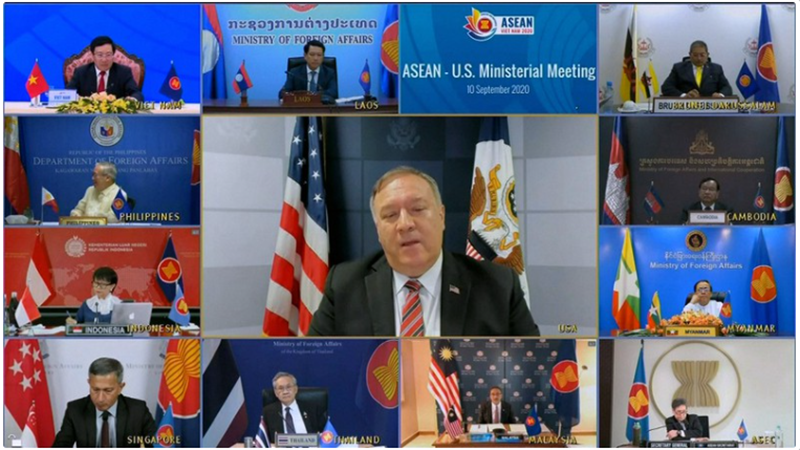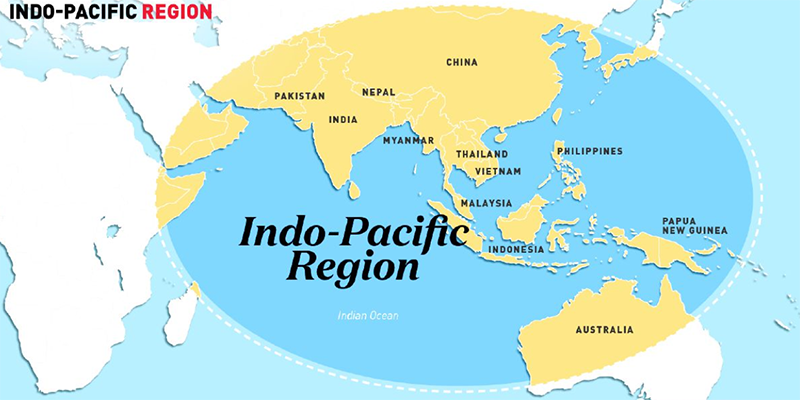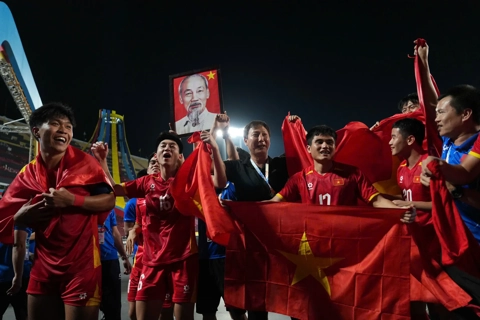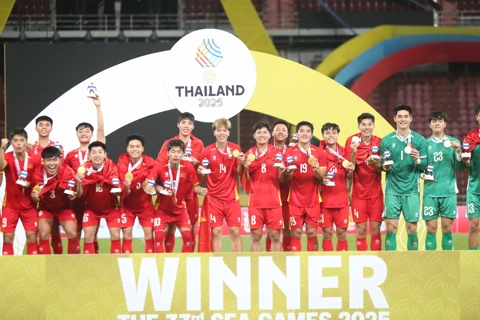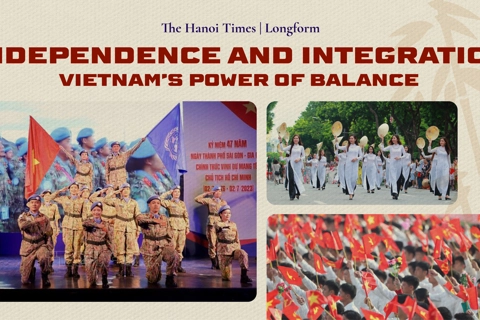ASEAN given important role in US Indo-Pacific strategy
The 10-state bloc defines Indo-Pacific as the regions presenting both opportunities and challenges.
Washington has once again affirmed that ASEAN has a role at the heart of the Indo-Pacific which the US is pouring its efforts into.
| US Secretary of State Mike Pompeo at an online meeting with ASEAN foreign ministers on September 10, 2020. Photo: VTV |
“The ASEAN Outlook for the Indo-Pacific and the US Indo-Pacific Strategy share a respect for sovereignty, the rule of law, transparency, openness, and inclusivity,” US Secretary of State Mike Pompeo has said.
“These shared principles form the core of our work with ASEAN,” Pompeo said in a press statement released last weekend.
In the statement, Pompeo said the US reiterates its support for ASEAN as it speaks with a strong, collective voice to advance these shared values and affirmed that Washington stands with ASEAN partners as they insist on the rule of law and respect for sovereignty in the South China Sea, where Beijing has pursued aggressive campaigns of coercion and environmental devastation.
He also emphasizes that the US stands for transparency and respect in the Mekong region.
With the packed schedule of Mike Pompeo with foreign ministers in the Indo-Pacific region on September 9-11, Washington once again reaffirms its commitment to boost ties with its partners in the region where China is flexing military muscles.
In the 53rd joint statement by the ASEAN Foreign Ministers' Meeting convened last week, the 10-state bloc reiterates the importance of regionalism and multilateralism in its external relations.
ASEAN Outlook on Indo-Pacific
| ASEAN views Indo-Pacific with both opportunities and challenges |
The 10-state bloc in 2019 released its “ASEAN Outlook on the Indo-Pacific” that views the Asia-Pacific and Indian Ocean regions amongst the most dynamic in the world and they continue to experience geopolitical and geostrategic shifts that present both opportunities and challenges.
The outlook envisages ASEAN Centrality as the underlying principle for promoting cooperation in the Indo-Pacific region, with ASEAN-led mechanisms, such as the East Asia Summit (EAS), as platforms for dialogue and implementation of the Indo–Pacific cooperation, the ASEAN Plus One mechanisms, ARF, and ADMM-Plus.
The outlook is based on the principles of strengthening ASEAN Centrality, openness, transparency, inclusivity, a rules-based framework, good governance, respect for sovereignty, non-intervention, complementarity with existing cooperation frameworks, equality, mutual respect, mutual trust, mutual benefit and respect for international law, such as UN Charter, the 1982 UN Convention on the Law of the Sea (UNCLOS), and other relevant UN treaties and conventions, the ASEAN Charter and various ASEAN treaties and agreements and the EAS Principles for Mutually Beneficial Relations (2011).
Emeritus Prof. Carl Thayer of the University of New South Wales, Canberra, said the ASEAN way, the norms that govern ASEAN’s decision-making, calls for dialogue, not confrontation, and inclusivity. These norms mitigate against ASEAN and its members taking sides.
For the US, it has been pursuing the free and open Indo-Pacific in which the vision of freedom of navigation in Pacific waters was promoted to challenge Chinese groundless assertion of sovereignty in the South China Sea.

